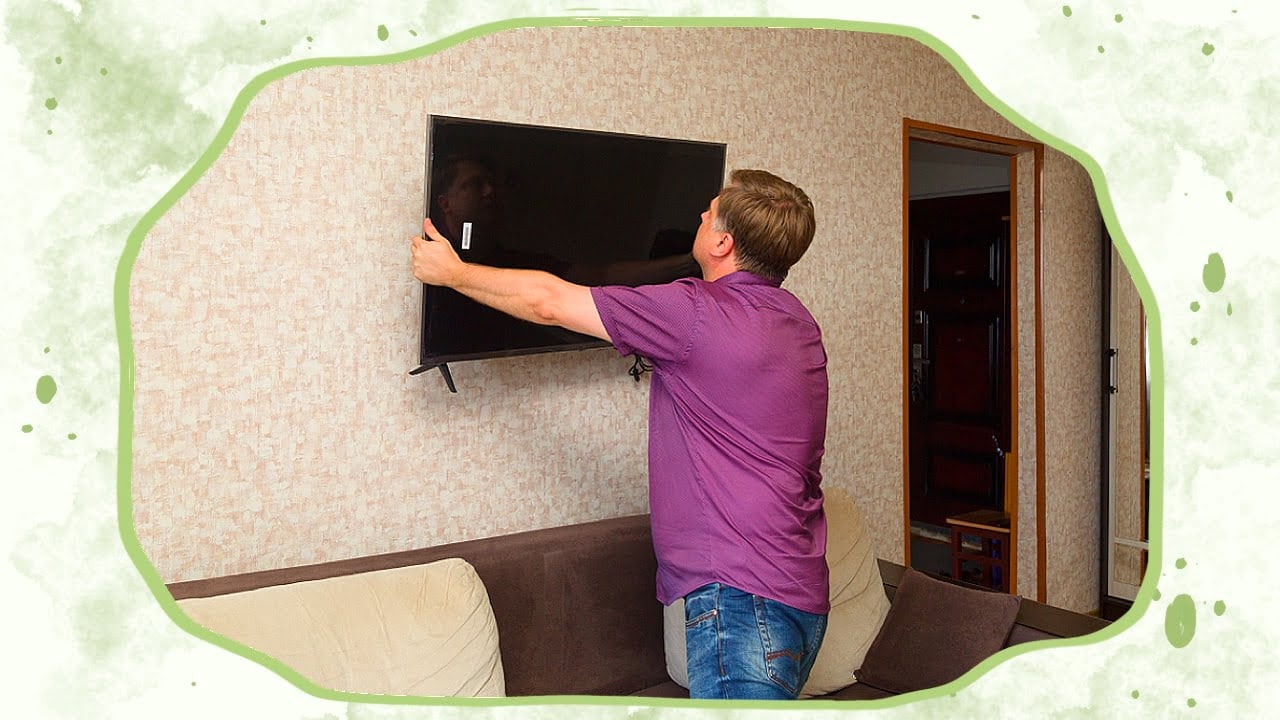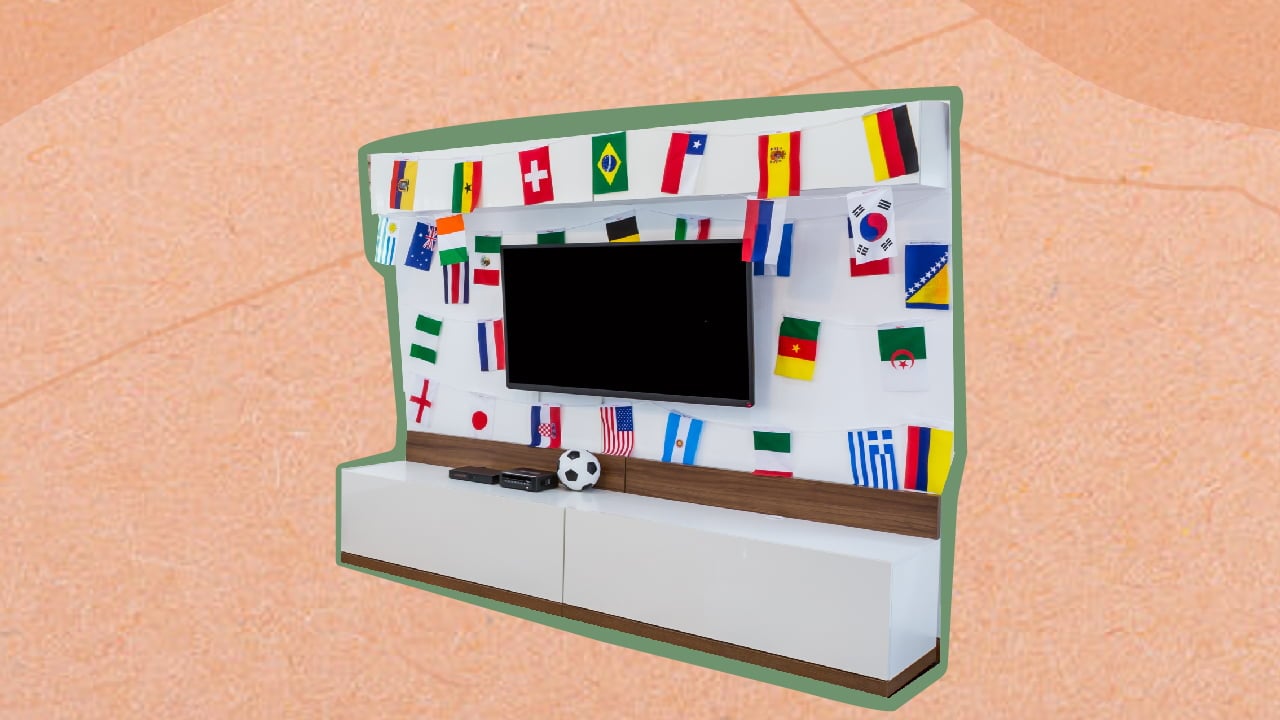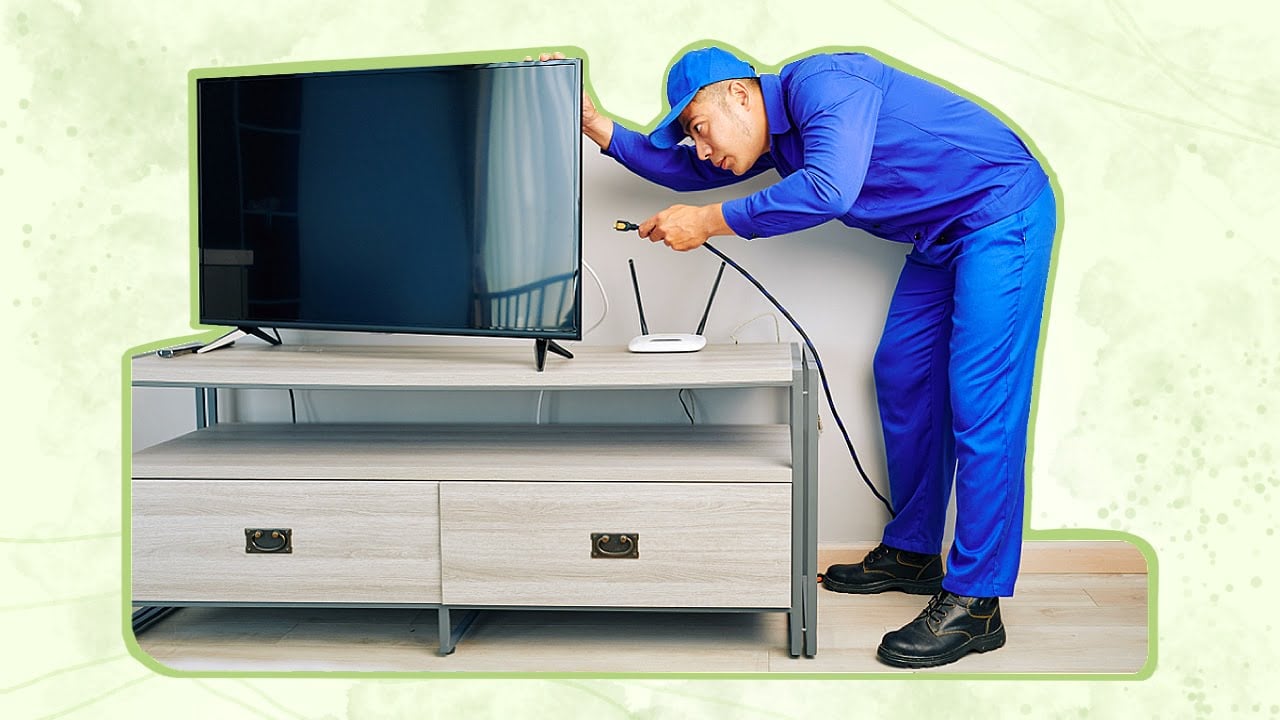Mounting a TV on the wall has a practical purpose, acting as a great space saver and helping organize the room better. Even without studs, you can mount a TV on uneven stone facades, brick walls, or over the fireplace.

Most people think that using a flat-panel display is guaranteed to improve their TV viewing experience, but that's hardly the case. What's particularly important is how you mount the TV and whether changing the viewing angle is possible.
This is particularly critical when there are no wall studs, as flimsy installation techniques will cause the TV to fall. My guide highlights all the steps you must follow to mount a TV without wall studs.
How To Mount A TV Without Studs

These are some effective techniques for mounting a TV without wall studs -
1. Wall Anchors
One of the easiest and simplest techniques for mounting a TV without studs is by using wall anchors. The wall anchors reduce the chances of damaging the wall and prevent the screws from falling out of the grooves.
Moreover, wall anchors are highly secure, and you can complete the installation without professional help if needed. The first step to using drywall anchors as TV mounts is determining the size and how many pounds the TV weighs before selecting the desired position.
For the best results, the TV should be at eye level, so mark the position of these TV wall mounts with a marker. After that, take the TV mount from the box and tighten the brackets to the television.
In most cases, the manufacturer provides all the components with the TV wall mounts, and you can simply fasten them with screws. Once satisfied, measure the available wall space and surrounding area to see if it's suitable for drilling the mounting plate into the wall.
You will again have to secure the screws tightly to the TV mount, followed by the mounting plates or plywood. Check whether everything is set and working properly, and tilt the mounted TV to the desired viewing angle.
2. Toggle Anchor
There are two popular drywall anchors you must know about - toggle anchors and pointed molly bolts. Toggle anchors have a butterfly toggle at one end that proves useful for anchoring to the back of the drywall.
Usually, when people pull the screw or apply some form of outward force, toggle anchors resist and prevent the drywall from crumbling under pressure. Without toggle anchors, you would be pulling down the whole wall instead of just one screw.
3. Non-Pointed And Pointed Molly Bolts
I suggest using molly bolts if you need strong anchors suitable for holding a medium to heavy load. They are slightly different than regular toggle bolts and are available in 2 types - non-pointed molly bolts and pointed molly bolts.
The pointed molly bolts have a sharp tip, and you can fix them to the wall with a few strong hammer blows. On the other hand, it's essential to drill the installation hole for a non-pointed molly bolt, which makes them suitable for plaster walls.
You will find that when left loose, the bolt sleeves appear thin, but upon tightening, swells and acts as an anchor for the drywall. Once a molly bolt is properly attached, replace the existing screw with TV wall mount screws.
4. Ceiling Mounts
Another effective technique to mount a TV is by using a ceiling mount. While most people don't like this option, ceiling mounts are classy and don't require wall studs to install a flat-screen TV.
On the flip side, compared to other wall anchors or installation methods, using ceiling mounts are more complicated and time-taking. It would be best to use this method when there are beams on the ceiling; otherwise, it becomes more difficult.
The purpose of the beams is they act like studs and provide more stability during the wall mounting process. But remember to determine the weight and size of the TV, along with the ceiling height, before installation.
Make sure the ceiling isn't very high, and consider the type of ceiling mount you need. Look at the available joists and beams to know whether you need long or short anchor screws.
You will have to screw the mounts to the ceiling and connect the clamps to the TV before screwing them tightly to the base of the mount. All that's left is checking if the mounted TV is working and watching your favorite shows.
5. Mounting Plates
The third technique uses mounting plates positioned on the wall behind the TV with the help of anchor screws. Best of all, a mounting plate guarantees much-needed stability and security, as it's a solid surface.
Moreover, since several anchor points are present across the wall, the TV's weight gets distributed evenly. But the problem you will face when using a mounting plate is they don't blend with the aesthetics of the room.
In most cases, the mounting plate is visible from behind the TV on the wall; however, there is a solution. You can paint the mounting plate so it matches the wall color or makes the mounting plate smaller to cover it with the TV.
Locate the best position for fixing the plate on the wall and mark it with tape or pencil. After that, secure the mounting plate to the drywall with a nail and hammer or use wall anchors. Then hang the TV from the plate and ensure everything is fine.

Tools Needed To Mount A TV Without Studs
Here are some of the tools you will need to complete the mounting process -
- Tape measure
- Pencil or masking tape
- Hammer
- Level
- TV stand
- Flat-headed or Phillips-head screwdriver
- All other mounting hardware provided by the manufacturer
Steps To Follow
To achieve the correct TV position after mounting, place the wall mount plate at the desired spot and mark it with a pencil. Then insert a screw into one end of the wall mount while holding it steady with the other hand to keep the base straight.
If there's any confusion, you can use a level to straighten the TV wall mount. Once you are satisfied, hammer in the screws at one end, especially nails that are the widest apart. This will be followed by the other nails and the TV bracket, ranging from 100 to 600 mm for VESA brackets.
Choose the right spacer, attach it to the bottom of the VESA holes, and fix the TV to the correct tilt. Then pull the cable to unlock the spring lock and mount the cable television on the wall.
The last step is pulling the cable again, but this time by reattaching the spring lock to secure the TV.
Things To Consider
Before mounting the TV, read through the following points to see if you need to make any adjustments or repairs.
1. Weight Of The TV
The most important thing to determine is whether the wall mount can bear the size and weight of the TV. Although the dimensions of a TV vary from one model to another, in most cases, a 32-inch TV weighs around 25-30 lbs.
Any model with a bigger screen will obviously weigh more, so check the TV's weight and choose a TV mount with a suitable load capacity. But even then, it would be wise to exercise caution when lifting and mounting the TV.
I usually ask a friend to help me, even if I'm lifting a flat-screen TV.
2. Quality Of The Mount
You should know that every TV mount is suited to a specific model, depending on the size and weight of the television. But modern VESA mounts are compatible with all TVs for secure mounting while preventing the walls from getting damaged.
Understandably, a no-studs TV mount for a 32-inch screen won't hold the weight of a 40-inch screen TV. So, ask for professional help if needed, but don't use the wrong mount, or the TV could come loose and topple to the floor.
3. Proper TV Position
Check the wall where you will mount the TV and find a suitable spot with the necessary space to securely hold the screen. My TV is in the hall, considering it's a large space with plenty of chairs or tables, making it perfect for seating multiple guests.
And more important than comfort is ensuring the wall has the required number of AC power plugs and sockets for all the wires. After that, choose the correct mounting height, ensuring the TV is at eye level and at the center for proper viewing.
Once again, it would be best to ask for help so that while your friend holds the TV, you can check whether the mounting height and angle are correct. And remember to mark the location of the bottom right or left corner of the screen on the wall before mounting the installation hardware.
4. Condition Of The Wall
If the drywall or plaster is cracking and doesn't appear in good condition, you need to repair the entire wall first so that the mount is securely anchored. In such instances, even the strongest wall anchors will fall off, causing damage to the TV screen.
In most cases, hollow walls are flimsy and can bend or start cracking under the TV's weight, despite installing a sturdy anchor point.
5. Mount Type
Among all other drywall anchors, fixed and tilting mounts work best when installing a TV on a wall without studs. I have noticed that fixed mounts are set in one position, and you cannot move the TV screen to the correct angle, but tilt mounts offer greater convenience. With the latter, you can alter the vertical angle of the TV screen for the perfect viewing experience.
It's important to note that with a full-motion, no-studs TV mount, you must not use toggle bolts or wall anchor screws. This is because such types of no-stud wall mount anchors carry additional weight due to the swivels and arms and promote full-angle adjustments.
Moreover, continuously altering the angle and position of the TV will exert excess pressure on the articulated wall mount and wall. But there's no reason to worry when you want to use a no-stud TV wall mount, as there are multiple alternatives to choose from.
When you are confused, consult a professional to know the mounting bracket type and how to mount a TV to a wall without studs. I suggest that even if it costs a bit more, you can never go wrong with an expert opinion, especially to avoid shattering the TV or damaging the drywall.
After that, ask the professional to help you find the correct position for the wall plate, the height of the TV from the floor, and secure the mount. The most important thing is the wall position; otherwise, the ability to change the viewing angle is greatly restricted.
Tip
When the wall you choose for mounting a TV doesn't have studs, opt for fixed and tilt mounts that hang like a picture frame.
Toggle anchors work like pointed and non-pointed molly bolts, presenting another reliable option whereby you must simply attach the screws of the TV wall mount.

How To Mount A TV Without Studs Conclusion
The first thing you must do is seek permission from the apartment landlord to make constructions on the wall of your house. Once approved, use a stud finder to see if there are any wall studs and measure the length and breadth to calculate the available surface area for mounting a TV.
Then get all your equipment ready, including a cordless swivel gun, nut, washer, wire rope, fastener, etc. You must also wear protective gear like a durable cleat, gloves, and goggles, especially when mounting the TV as part of a Do-It-Yourself project.
Of all the places, installing a flat display mounting interface over a fireplace is possibly the trickiest, so get professional help since they use the latest computer hardware. For everything else, you can read my blog for easy installation without spending much money.
